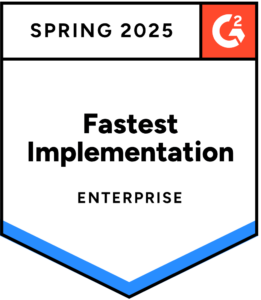Fix Your Third-Party Deliveries through an Automated Reconciliation Process
Blog post
Share
Third-party delivery services have taken the world by storm – and they’re not going anywhere anytime soon! However, as much as third-party services like DoorDash and Instacart have boosted brand visibility and sales, they’ve also caused headaches for accounting teams. Current third-party delivery service reconciliation processes are broken, replete with manual interaction, and lack of visibility.
Without leveraging automation, nearly every step of the process holds opportunities for incorrect transactions. From the initial moment a customer places an order via a third-party app, the potential for incorrect pricing as well as incorrect tax calculation and collection exists. This is especially true if multi-way matching is involved.
- When the point-of-sale (POS) receives an order, duplicate orders or fraud can occur, which could result in higher food costs or lost revenue.
- Once the order is received by the customer, the third party then sends payment, commission, and/or feed data to the organization – which overall lacks visibility and control, not to mention the possibility of short payments.
- Lastly, if the organization manually reconciles revenue and related expenses, it would be a lengthy reconciliation process with limited data followed by a manual journal entry process – with plenty of room for error (e.g., missing revenue and/or third-party expenses).
There are several scenarios you might have come across in your third-party delivery services reconciliation process:
The order number from the third-party delivery service does not match the order number on the POS
The item cost and tax amounts for the day exist, but the order number does not match, causing difficulties when matching transactions by order number.
Tax does not match between the third-party delivery service and the POS
In an instance where the calculated tax amount does not match between a third-party delivery service and the POS, it is important to resolve these tax differences, especially depending on who is collecting and paying the tax, be it the restaurant or the third-party delivery service.
The POS subtotal is higher than the third-party delivery service
The POS shows a larger amount for the food costs than the third-party delivery service. This could be an instance where the third-party delivery service is not charging for an item (think about add-on items that might not be priced in an external app). The amount will start to become material if this occurs on multiple occasions without notice.
Third-party delivery service item cost is higher than the POS
Here we have an instance where the third-party delivery service might possibly show the item cost is higher. We would want to do additional research to understand why the extra amount is missing on the POS. Did the third-party delivery service have 5 items ordered but only 4 came through the POS, which would explain the variance? Does something need to be added to the POS to make up the lost revenue? Also, if the POS is correct, does the third-party delivery service have the correct commissions calculated?
Order is on the third-party delivery service, but not on the POS
This could be an instance where either the sync between the third-party delivery software and the POS was broken or the POS is missing the order, thus revenue is not being recorded for this order. Otherwise, it is possible that the order was canceled through the delivery service app for some reason, but it is not showing on the third-party delivery service transaction file. This would be an instance where additional research would be required.
Order is on the POS, but not on the third-party delivery service
Here we have an order with tax and subtotal on the POS but no corresponding order with the third-party. Could this have been manually entered into the POS at the restaurant, the food was made, but it never went to a customer? Did the store employee get free food, knowing that the restaurant is going to go back to the third-party delivery service and ask where their money is? This is the instance of fraud that is most worrisome to restaurants.
The Answer: Automation with Adra Matcher
Adra Matcher automatically performs reconciliation of the POS to third-party services, eliminating the potential for human error as well as the manpower once spent on tedious tasks, giving time back to teams for what matters most. Equip your team with visibility into monies owed by third parties, accurate data, and potential fraud with Adra’s automated reconciliation solution.
Written by: Nicole Tallman






